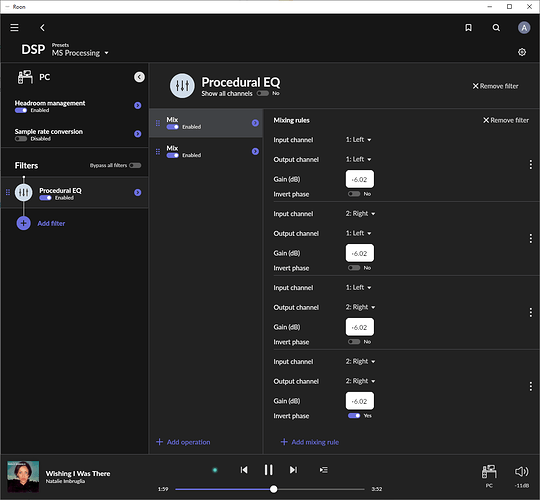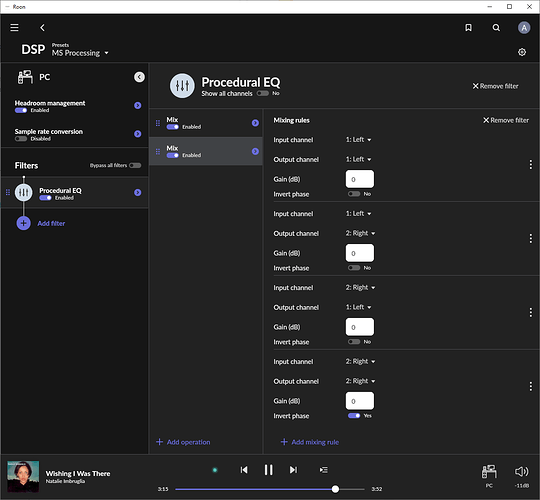Maybe this will help - it converts the L+R to M+S (mid + side) and allow for adjustment of the M vs S levels during a conversion back to L+R. This is basically what is done in production for stereo width control on specific parts in a track.
The following is a mix matrix to convert L+R to M+S (mid+side on left+right channels) with gain compensation (do not adjust anything here - the -6.02dB is specific to compensate for the summing). Usually each stage has a -3.01dB adjustment, but I’ve put twice the reduction in the encoding stage to and left it out of the decode stage to simplify use of the decoding stage mix adjustment.
This next mix matrix converts M+S (on left + right channels) back to L+R.
Remove the other unused channel entries in each mix (right click … and select remove).
If you adjust the gains of the first two mix rules in this second mix, then that will affect the contribution of the mid (mono) part of what you hear.
If you adjust the gain of the second pair of mix rules, then that will effect the side channel contribution and affect the apparent separation.
Maybe try -6 for the first pair and +6 for the second pair to get a sense of the effect. With the values in the second matrix all at 0, the output should be identical within 1/100th of a dB of the original due to the gain compensation in the first mix.
Personally I think many tracks sound quite broken (once you get over the novelty of it) when you fiddle with the intended mid/side levels beyond a small amount as basically you can end up massively enhancing chorus and flange effects and often the image is lost, or you get used to it and everything else sounds broken 

